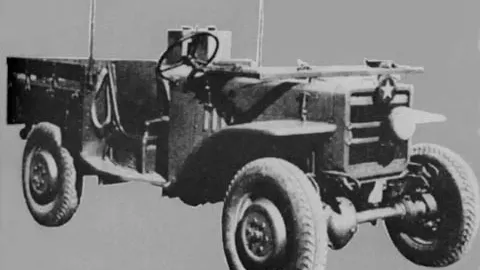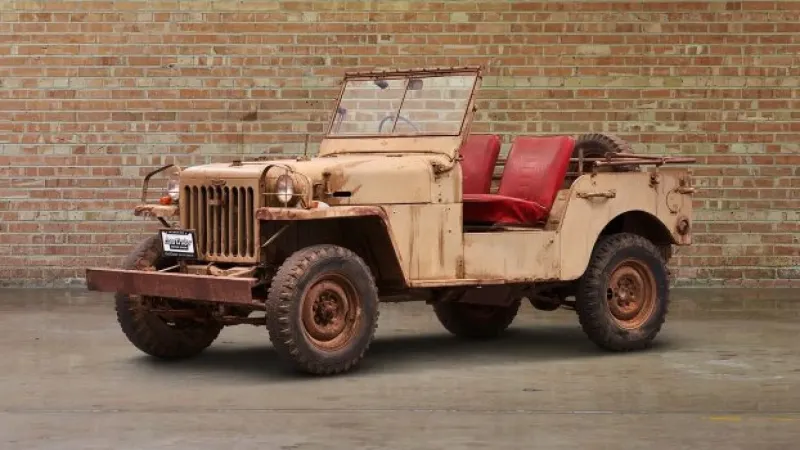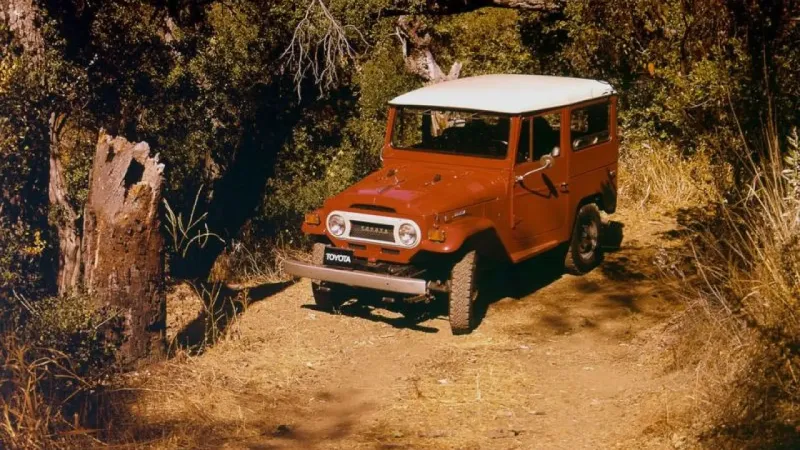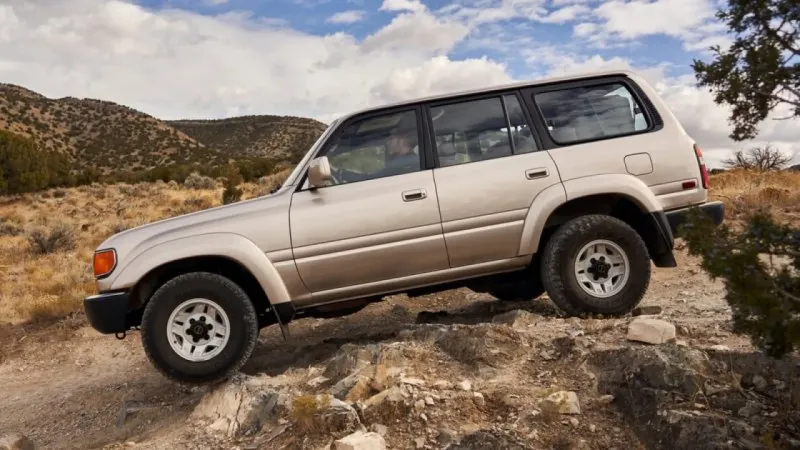 Take one look at the photo above, and you’ll see beautiful, yet rugged sweeping plains. Maybe, you see steep mountain peaks that are blanketed in shades of gray and white. Maybe you can smell the air, feel the nip of the chill on your skin. Like you’re there, and you’re ready to take on whatever this insane landscape has to throw at you.
Take one look at the photo above, and you’ll see beautiful, yet rugged sweeping plains. Maybe, you see steep mountain peaks that are blanketed in shades of gray and white. Maybe you can smell the air, feel the nip of the chill on your skin. Like you’re there, and you’re ready to take on whatever this insane landscape has to throw at you.
This is exactly what the legendary Toyota FJ does to your soul.
It promises capability, delivers on the promise with ultimate authenticity, and then leaves you looking for the next opportunity to get off the beaten path. At Velocity, we’ve had the pleasure of working on more than our fair share of Toyota FJ’s and we think that this unique vehicle deserves to have its story told:
- Wartime Origins
- Legendary 40 Series
- Legacy and Influence
Ready to make the jump to the wild side and explore this incredible vehicle with us? Let’s get into it!
Wartime Origins
In World War II, Japan had started the production of a vehicle known as the AK10. The concept was quite simple; design a vehicle built in Japan that was based around the Willy’s Jeep used by Americans. By the time the AK10 had completely gone through its development, WWII was effectively over and the vehicle was shelved. That is until 1950 rolled around and the Korean War was beating on Japan’s doorstep.
 Toyota AK 10 - Credit: Off Road Action
Toyota AK 10 - Credit: Off Road ActionSince Japan was still occupied by the United States, the Americans were looking for a clean sheet design that was similar in scope to the Willy’s Jeep that was made famous in WWII and beyond. The reason was simple: the Americans needed to have a locally produced vehicle that could be quickly, and easily deployed in the region. By 1951, they had just such a vehicle; the Toyota BJ. Originally, the BJ was passed over by Japan’s own National Police Reserve Forces (Army) but it made a big impression on the National Police Agency. So much so that they immediately placed an order for 200+ of the plucky 4x4.
 Toyota BJ-T - Credit: Toyota Herritage Museum
Toyota BJ-T - Credit: Toyota Herritage MuseumOriginally, this VERY Jeep-like vehicle was offered in 4 variants:
- BJ-T (Touring)
- BJ-R (Radio)
- BJ-J (Cowl-chassis for a fire-engine)
- FJ-J (Cowl-chassis for a fire-engine)
This was the start of something special.
The Land Cruiser
In 1954, Toyota found itself in a very interesting predicament, and directly in the gunsights of Willy’s. Turns out, Toyota was using the “Jeep” moniker on their vehicles, and it also happened to look a whole hell of a lot like a Jeep! In response, Toyota kept the model designations the same (BJ, FJ, etc..) but instead chose to adopt the name Land Cruiser instead. Interestingly, the name was coined by Toyota technical director Hanji Umehara, and as he explained it, the goal was to come up with a model name that sounded more rugged than its chief competition; Land Rover.
 1957 BJ20 – The First Toyota Land Cruiser In The United States - Credit: Car and Driver
1957 BJ20 – The First Toyota Land Cruiser In The United States - Credit: Car and DriverDropping the “B” Series motor for the more powerful “F” series engine, the first model to really wear the Land Cruiser designation was the FJ20, which dropped in around 1955. It had more conventional styling (designed for export) and offered a unique suspension that was pulled from Toyota’s light truck series. Crucially, the FJ20 was one of the first Toyota vehicles to be offered for export, and a single unit (pictured above) made its way to our shores in 1957. Yes, the Land Cruiser FJ20 was one of the very first Toyota vehicles to hit our shores!
Although it was slow to catch on, by 1960, Toyota was seeing quite a bit of demand for the Land Cruiser and the time was due for a major update.
That update was the legendary FJ40.
Legendary 40 Series
Although the looks of the FJ40 were more evolutionary than revolutionary, what was found under the skin is what really set the FJ apart from its forebearers. The biggest mechanical change was a 2-speed transfer case that allowed the FJ to easily clamber up and over some of the most challenging terrains with ease. It’s been said that in the most remote parts of the world, you continue to find a plethora of Fj40’s (especially Diesel models) still running, and still doing what they do best: exploring the unknown.
 FJ40 in its natural element - Credit: Car and Driver
FJ40 in its natural element - Credit: Car and DriverIn America, the Land Cruiser quickly became the best-selling Toyota in the lineup and stayed in that position for a full 5 years. Transmission choices, engine choices, and other mechanical options were simply not offered on the FJ. It came one way (at least in America, other countries got a host of versions); a big OHV 3.9L Straight Six with 210 lb. ft. of torque, a 3-speed column shifter, and a selectable 4 wheel drive. All body styles were 2 door wagons and carried a wheelbase that was just slightly longer than the Jeep CJ of the same era.
New advancements in assembly technology, and a continual commitment to producing the most reliable vehicles in the world really cemented the FJ40 as a legend. So much so that Toyota barely touched the winning formula for a staggering 23 years. Yes, you read that right, the FJ40 was basically unchanged for a full 23 years!
Here are some of the major milestones that did happen along the way:
- A larger, more powerful 4.2L I6 (2F) replaced the aging 3.9L I6 in 1975
- To take advantage of the increased power, a 4-speed manual was offered that same year
- Power steering and a transmission cooler were added in 1979 along with a slightly updated look
The very last FJ40 to make it to American shores was in 1983, and production of the legendary 40 series stopped shortly after for the rest of the world. To us, and a legion of fans, the FJ40 is the purest, most honest of the off-road vehicles offered by Toyota and deserves a spot in the pantheon of automotive greats.
Legacy and Influence
The concept of creating an up-market Off-Road SUV that was also capable of carrying around a family was not lost on Toyota. In fact, the subsequent generation of the Land Cruiser went exactly in that direction - offering 4 doors, better interiors, and seating for up to 7 people. Prior to FJ60’s, Fj80’s, etc; there was one rather, unique, looking vehicle that not many people really know ever existed and it’s worth talking about because its influence was so dramatic on future years of the Land Cruiser.
 Toyota FJ55 Land Cruiser - Credit: Motortrend
Toyota FJ55 Land Cruiser - Credit: MotortrendAffectionately known as the ‘Iron Pig’ the FJ55 was a 7 passenger wagon that was designed with the North American market in mind. While the styling was subjective, the performance and capability of the FJ55 were not. Sure, it may have been slow, loud, and crude but it was tough as nails and carried with it the sort of reliability that Toyota has come to be famous for. It never really sold well but its concept would go on to influence Land Cruisers for many subsequent generations to come.
Here’s some more of our favorite Land Cruiser generations from the last 40 years:
FJ60
 Toyota FJ60 Land Cruiser - Credit: Motortrend
Toyota FJ60 Land Cruiser - Credit: MotortrendFJ60
 Toyota FJ80 Land Cruiser - Credit: Motortrend
Toyota FJ80 Land Cruiser - Credit: MotortrendFJ Cruisers - Velocity Style
 Look, we’re not going to lie here: no matter which Land Cruiser you’re looking for, it’s pretty hard to improve upon Toyota’s original formula but that doesn’t mean that the formula can’t be enhanced. At Velocity, we’re pretty damn good at not leaving well enough alone, and we’ve had a number of beautiful Land Cruisers roll through our shop. Everything about our Land Cruiser / FJ builds looks like it wouldn’t be out of place on a bone stock truck, but we’ve taken the time to carefully enhance all that Land Cruiser goodness, bit by bit, and weld by weld.
Look, we’re not going to lie here: no matter which Land Cruiser you’re looking for, it’s pretty hard to improve upon Toyota’s original formula but that doesn’t mean that the formula can’t be enhanced. At Velocity, we’re pretty damn good at not leaving well enough alone, and we’ve had a number of beautiful Land Cruisers roll through our shop. Everything about our Land Cruiser / FJ builds looks like it wouldn’t be out of place on a bone stock truck, but we’ve taken the time to carefully enhance all that Land Cruiser goodness, bit by bit, and weld by weld.
We recently completed a 1978 FJ40 in a stunning shade of Army Green that we’re particularly proud of. Although that 2FE was an incredible motor, it was, unfortunately, a bit anemic for duty in the modern world. To remedy this, we dropped in a fire-breathing LS3 V-8, running through a prepped 4L60E transmission! Trust us when we say, it isn’t anemic anymore. We’ve even kept the original Toyota 3 speed transfer case for that extra bit of authenticity.
Inside, Velocity has taken the once austere and utilitarian interior and completely enhanced it with beautiful scotch leather, a custom center console, a custom dashboard, and a host of luxury upgrades. How about in-dash air conditioning, and a Kicker stereo? In an Fj40? This is unheard of but we not only did it… we killed it.
Our passion for bringing classic 4 x4 vehicles into the modern age knows no limits and that’s exactly why we’re able to produce vehicles that straddle the line between nostalgia and modern luxury so well. Not a single member of our team is afraid to push the limits, and the results are nothing short of extraordinary. If you’re looking to make a classic Land Cruiser a part of your collection, Velocity is ready to make that dream a reality.
Currently, the Velocity team is working on two very different FJ40s. The first will look relatively similar to how it was in 1975. However it will be sporting a new LS3 Motor putting out 430HP. We also have a diesel in the works. Along with the diesel engine, it will be ready for the trails with upgraded suspension, wheels, and an exoskeleton roll cage around the exterior! Stay tuned to see these FJ40s!
